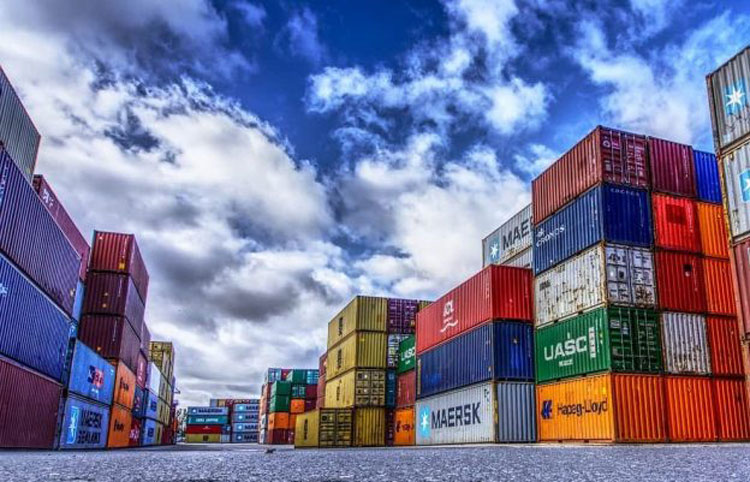The Diplomat
Spanish exports hit a new record in 2021 by surpassing the 300,000 million euros barrier for the first time, according to the annual report on foreign trade in goods published yesterday.
However, the same report indicates an even faster growth in imports, especially as the cost of buying energy from other countries soared, particularly in December. As a result, the trade deficit doubled last year to 26,178 million euros.
Spanish exports of goods totalled 316,609 million euros, 21.2 % more than a year earlier and 9.1 % above the figure for 2019, just before covid-19 and when they set an all-time high.
Imports grew by 24.8 % compared to 2020 and by 6.3 % compared to their pre-pandemic level, to 342,787 million euros, also a record figure.
These increases contrast with the falls of the previous year, when sales to other countries fell by 10 % and purchases abroad fell by a further 14.7 %.
The State Secretary for Trade, Xiana Méndez, pointed out in a meeting with journalists that despite having increased notably, the amount of Spain’s trade deficit in 2021 is the second smallest in the last five years.
She also said that by 2022, the positive trend in exports is expected to continue – albeit to a lesser extent – thanks to the fact that the problems in maritime transport and the “bottlenecks” are being resolved, while energy prices and the lack of semiconductors pose significant “risks”.
For her part, the Minister of Industry, Trade and Tourism, Reyes Maroto, who took part in a breakfast at the New Economy Forum, predicted that there will be a better business climate this year. She indicated that next week the Business Climate Barometer, which ICEX carries out in collaboration with IESE, will be presented. And he pointed out that, according to this study, 93% of the companies surveyed, more than 700 multinational companies that invest in Spain, have said that they are going to invest or maintain their investments in Spain, in terms of employment, turnover and exports.
The report on foreign trade gives energy and its rising prices a key role in Spain’s negative trade balance, accounting for 96.7% of the total deficit (25,327 million euros).
In fact, the import of this product generated a cost of 46,576 million euros, 72 % more than in 2020, although the rise in prices also benefited Spain on the export side, as it sold energy abroad to the value of 21,250 million euros, 70 % more.
By component, the increase in spending on purchasing coal and electricity (173 %) stands out, ahead of the increase in gas (91 %) and oil and oil derivatives (62 %).
In December alone, the increase in imports of energy products soared and the amount of energy purchases rose by 157 %, with gas accounting for the largest increase (408 %), ahead of coal and electricity (226 %), and oil and oil products (98.7 %).
The breakdown by country corroborates the importance of energy: the two markets where Spanish imports increased the most were Russia (134 %) and the United Arab Emirates (170 %), with Algeria also among the most important (89 %).
In terms of exports, it was capital goods (machinery, transport and telecommunications) that topped the statistics with 58,767 million euros, up 13.8 %, ahead of 56,977 million euros for food and beverages, which grew by 11.1 %.
This was followed by the chemical products sector, with 53.725 milllion euros and an increase of 32%, and the automobile sector, which has not yet fully recovered from the sharp drop recorded in 2020 due to the pandemic and added 40.450 million euros in exports (up 5%).
In terms of geographical distribution, the weight of the European Union (EU) in Spanish exports increased by 1.3 points, accounting for 61.8% of the total.
By country, France was the main destination for Spanish goods with a total of 50,479 million euros, followed by Germany (32,399 million), Italy (26,566 million), Portugal (24,871 million), the United Kingdom (18,817 million), the United States (14,769 million), Belgium (14,405 million), the Netherlands (11,441 million), Morocco (9,499 million) and China (8,660 million).
By autonomous communities, exports from Ceuta (+107 %), Madrid (+36.3 %) and Asturias (+32.6 %) increased significantly above the average. In total terms, Catalonia remained by far the biggest seller with 80,538 million euros.






